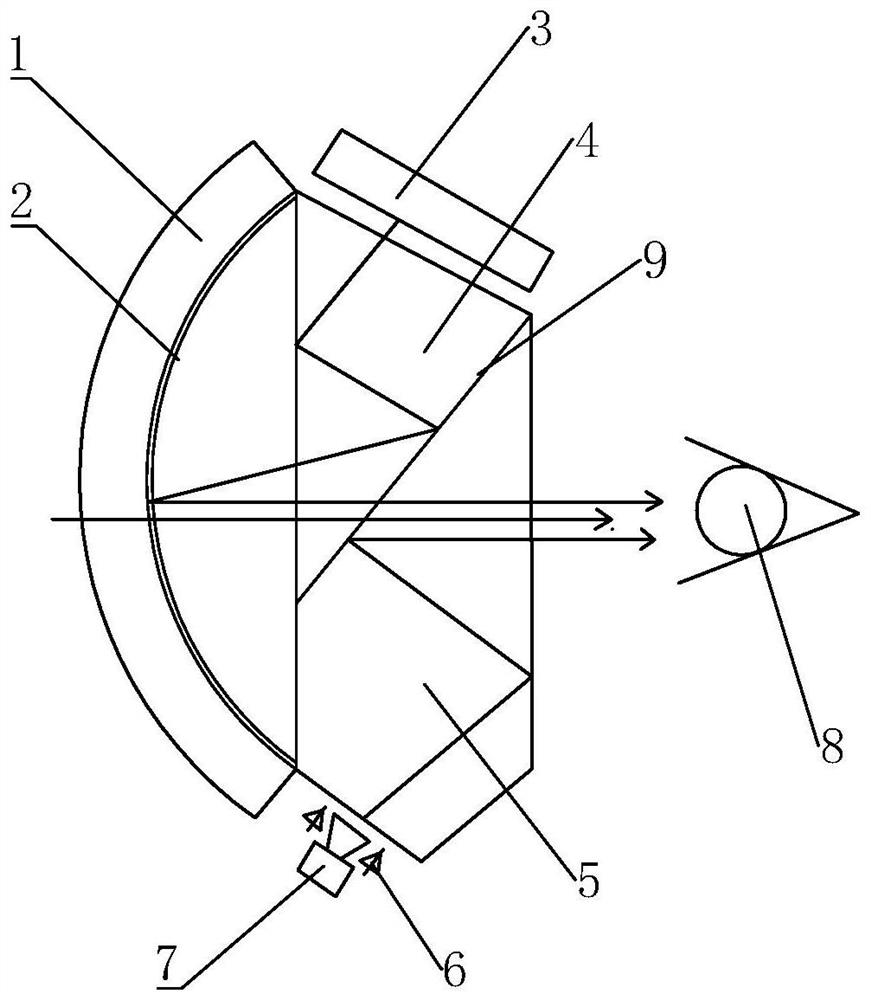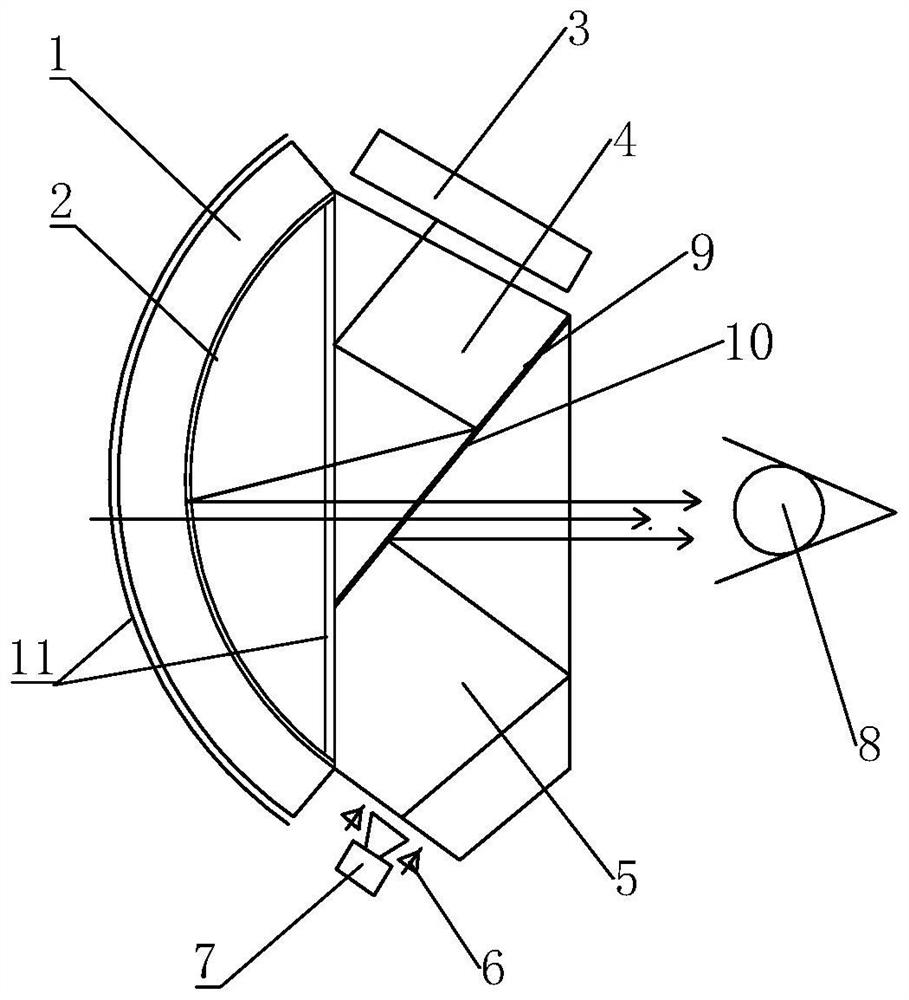Eye movement tracking optical device, head-mounted display device and eye movement tracking method
An eye-tracking and optical device technology, applied in optics, optical components, instruments, etc., can solve problems affecting the accuracy of eye-movement interaction, inaccurate eye tracking, and loss, so as to improve shooting quality, avoid interference, and improve The effect of accuracy
- Summary
- Abstract
- Description
- Claims
- Application Information
AI Technical Summary
Problems solved by technology
Method used
Image
Examples
Embodiment 1
[0043] An eye-tracking optical device such as figure 1 As shown, it includes an optical assembly, a display screen 3 at the top of the optical assembly, and a camera 7 at the bottom of the optical assembly. The optical assembly includes a first lens 1 and a second lens arranged side by side. The first lens 1 is a uniformly thick curved lens with a convex surface and a concave surface. The concave surface is close to the second lens. Semi-reflective film 2. The second lens is a waveguide lens, and the waveguide lens includes a waveguide prism 4 and a waveguide compensation mirror 5. The waveguide prism 4 is located above and close to the display screen, and the waveguide compensation mirror 5 is located below and close to the camera. The waveguide prism 4 and the waveguide compensating mirror 5 are bonded together along a slope from upper right to lower left to form a uniform optical lens, and a second semi-transparent and semi-reflective film 9 is pasted at the bonding positi...
Embodiment 2
[0045] An eye-tracking optical device such as figure 2 As shown, on the basis of Embodiment 1, an infrared reflective film 10 is added at the boundary between the waveguide prism and the waveguide compensation mirror to reduce the loss of infrared light, improve the reflectivity of infrared light, and improve the clarity of the eye image captured by the camera. .
Embodiment 3
[0047] An eye-tracking optical device such as image 3 As shown, on the basis of Embodiment 2, a layer of infrared cut-off glass 11 is respectively arranged on the front side and the rear side of the first lens to filter out the infrared light in the external ambient light, prevent the camera from overexposure, and affect the shooting picture. quality.
PUM
 Login to View More
Login to View More Abstract
Description
Claims
Application Information
 Login to View More
Login to View More - R&D
- Intellectual Property
- Life Sciences
- Materials
- Tech Scout
- Unparalleled Data Quality
- Higher Quality Content
- 60% Fewer Hallucinations
Browse by: Latest US Patents, China's latest patents, Technical Efficacy Thesaurus, Application Domain, Technology Topic, Popular Technical Reports.
© 2025 PatSnap. All rights reserved.Legal|Privacy policy|Modern Slavery Act Transparency Statement|Sitemap|About US| Contact US: help@patsnap.com



